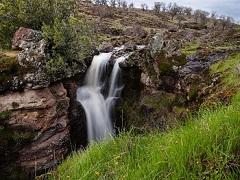BLM schedules virtual public meetings on NW California land use planning
Organization:
BLM Office:
Media Contact:
REDDING, Calif. — The Bureau of Land Management invites the public to a series of virtual public information meetings in preparation of a Northwest California Integrated Resource Management Plan. People who want to get involved in developing a plan to manage Northwest California public lands can get more information and share ideas.
Development of a Northwest California Integrated Resource Management Plan will guide management of nearly 400,000 acres of forests, meadows, rivers, lakes and coastline managed by the BLM Arcata and Redding field offices within Shasta, Tehama, Butte, Siskiyou, Trinity, Humboldt, Mendocino and Del Norte counties. The new plan will replace the current Arcata and Redding field office resource management plans, both more than 25 years old. The plan also covers management of mineral and energy resources on more than 600,000 subsurface acres.
“These meetings are the first public participation opportunities early in this planning process,” said Dereck Wilson, manager of the BLM’s Northern California District. “This is a good way for people to understand just what this plan will cover and to provide suggestions on topics and issues that the plan should address.”
The meetings, all virtual via Zoom, require pre-registration. After registering, participants will receive an email with instructions and a link for joining the meeting. Meetings will be held as follows:
- Tuesday, April 13, 11 a.m. to 1 p.m. Pre-registration link: https://zoom.us/meeting/register/tJwlceysrDIiGN0Zp-JGkhfbZMLt_Xt27Hlp
- Thursday, April 15, 4 to 6 p.m. Pre-registration link: https://zoom.us/meeting/register/tJEvdOqhpzovGtQR4jxKl3MpI2Dxf1yz2SuF
- Monday, April 19, 9 to 11 a.m. Pre-registration link: https://zoom.us/meeting/register/tJ0ufuqtrjMpHNH3KHfKyMiL2jTX94Cw_sIF
- Wednesday, April 21, 5 to 7 p.m. Pre-register here: https://zoom.us/meeting/register/tJIrduqurz0vGdG39RwyNXr9zYGtp0ni0Oiz
Participants can also join a meeting by telephone (pre-registration through the above links is required), by using one of the following numbers:
|
|
The introductory and overview information will be identical at each meeting. Participants can attend as many meetings as they desire. Anyone having difficulty registering or participating in a meeting should email [email protected] for assistance. Those unfamiliar with the Zoom virtual meeting platform can learn more by viewing the Zoom tutorials at https://support.zoom.us/hc/en-us/articles/206618765-Zoom-video-tutorials.
The BLM is resuming development of the Northwest California Integrated Resource Management Plan that first began in 2016. Work was stopped in 2018 while the BLM staff focused on recovery from the catastrophic Carr and Camp wildfires and other significant blazes.
“We collected significant amounts of information and ideas from local governments and organizations working with us as cooperating agencies,” Wilson said. “We will build upon that information as we restart the plan and build on it with new information collected in the upcoming meetings.”
The BLM’s resource management plans are the “blueprints” for keeping public lands healthy and productive. They serve as the basis for development of site-specific plans and uses in later years. They are completed under provisions of the National Environmental Policy Act, and as such, the plans are analyzed in an environmental impact statement (EIS) that looks at the potential environmental consequences for a wide range of planning alternatives. Public participation is a critical part of developing these land use plans.
There are many opportunities for public involvement in this process, including review and comment periods and public meetings on the draft plan and EIS. Through the process the BLM will share information and documents and provide comment opportunities at its national planning website, https://eplanning.blm.gov/eplanning-ui/project/2012803/510.
The BLM manages about 245 million acres of public land located primarily in 12 western states, including Alaska, on behalf of the American people. The BLM also administers 700 million acres of sub-surface mineral estate throughout the nation. Our mission is to sustain the health, diversity, and productivity of America’s public lands for the use and enjoyment of present and future generations.

